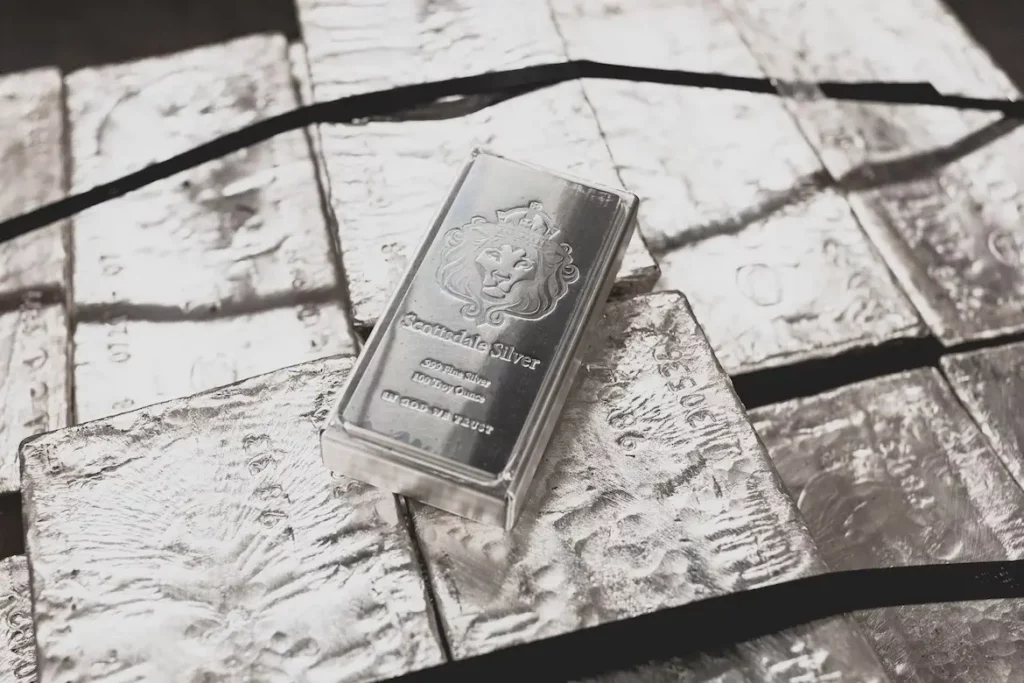Introduction to stacking silver
Silver stacking is the practice of investing in physical silver, either in the form of coins or bars. It is a popular investment strategy among precious metals investors, as it offers a way to hedge against inflation and other economic risks. There are many ways to go about silver stacking, and there is no one-size-fits-all approach. Do your research and make sure you are comfortable with the level of risk you are taking on. Silver is a precious metal that has many industrial uses, as well as being a valuable investment asset.
Silver stacking is the term used to describe the act of buying physical silver and storing it for future use or investment. There are many factors why people choose to stack silver, such as its use as a hedge against inflation or economic downturn or as a way to diversify one’s investment portfolio. Whatever the reason, stacking silver can be a great way to secure your financial future.

Benefits of physical silver investing:
Silver is seen as a safe-haven asset that can protect you from economic uncertainty and inflation. While there are many benefits to stockpiling silver, there are also some risks that you should be aware of. The price of silver has been uplifting, making it an attractive investment for many people. However, there are some reasons why you should consider stocking up on silver.
- First, silver is a good hedge against inflation. This is because the value of silver usually goes up when goods price increases. This makes silver a superb way to protect your wealth from inflation.
- Second, silver is a good investment in times of economic uncertainty. Unlike stocks and bonds, the price of silver is not as volatile. This means that it can provide stability in times of economic upheaval.
- Third, silver is an excellent way to diversify your portfolio. Investing in silver can reduce your reliance on other assets, such as stocks and bonds.
- Fourth, silver is a finite resource. Unlike gold, mined all over the world, silver is only found in a few places. This makes it a valuable commodity that will likely become more valuable over time.
- Finally, silver is simply beautiful. It looks fantastic whether you use it for jewelry, ornamentations, or decoration. This beauty increases the value of silver.
Stacking silver worth it or not?
Silver stacking is a popular investment strategy involving buying and holding physical silver bullion to protect against inflation and financial collapse. Silver stacking can be a great way to hedge inflationary risks for investors looking to save their purchasing power and build wealth over the long term. However, silver prices can be volatile quickly, so investors looking for short-term gains may be better off investing in other assets.
Silver stacking is investing in physical silver, such as coins, bars, or rounds. The appeal of stacking silver is that it provides a tangible asset that can be stored and maintained without the need for a bank or other financial institution. Silver stacking has many benefits, but there are also some drawbacks to consider.
Risks of Silver Investing:
Many investors have turned to silver as a haven for their wealth. However, while silver can be a good investment, there are also some drawbacks to silver stacking that potential investors should be aware of.
We will discuss the three main drawbacks of stacking silver:
1) Silver is a volatile commodity
2) There is no guaranteed return on investment
3) There are storage and security concerns
By understanding the potential risks involved in silver stacking, investors can make more informed decisions about whether or not silver is right for them.
Stacking silver is getting common. This involves buying physical silver bullion and storing it in a safe place. This approach has several advantages, including the fact that silver is a precious metal with intrinsic value. Additionally, silver is a scarce resource, so the value of silver may increase in the future. However, there are also several disadvantages to stacking silver, which include the fact that it is a physical asset that can be stolen, damaged, or lost. Additionally, silver is subject to price fluctuations, so there is the potential for loss if the price of silver decreases. Finally, the government may confiscate silver during economic or political turmoil.
